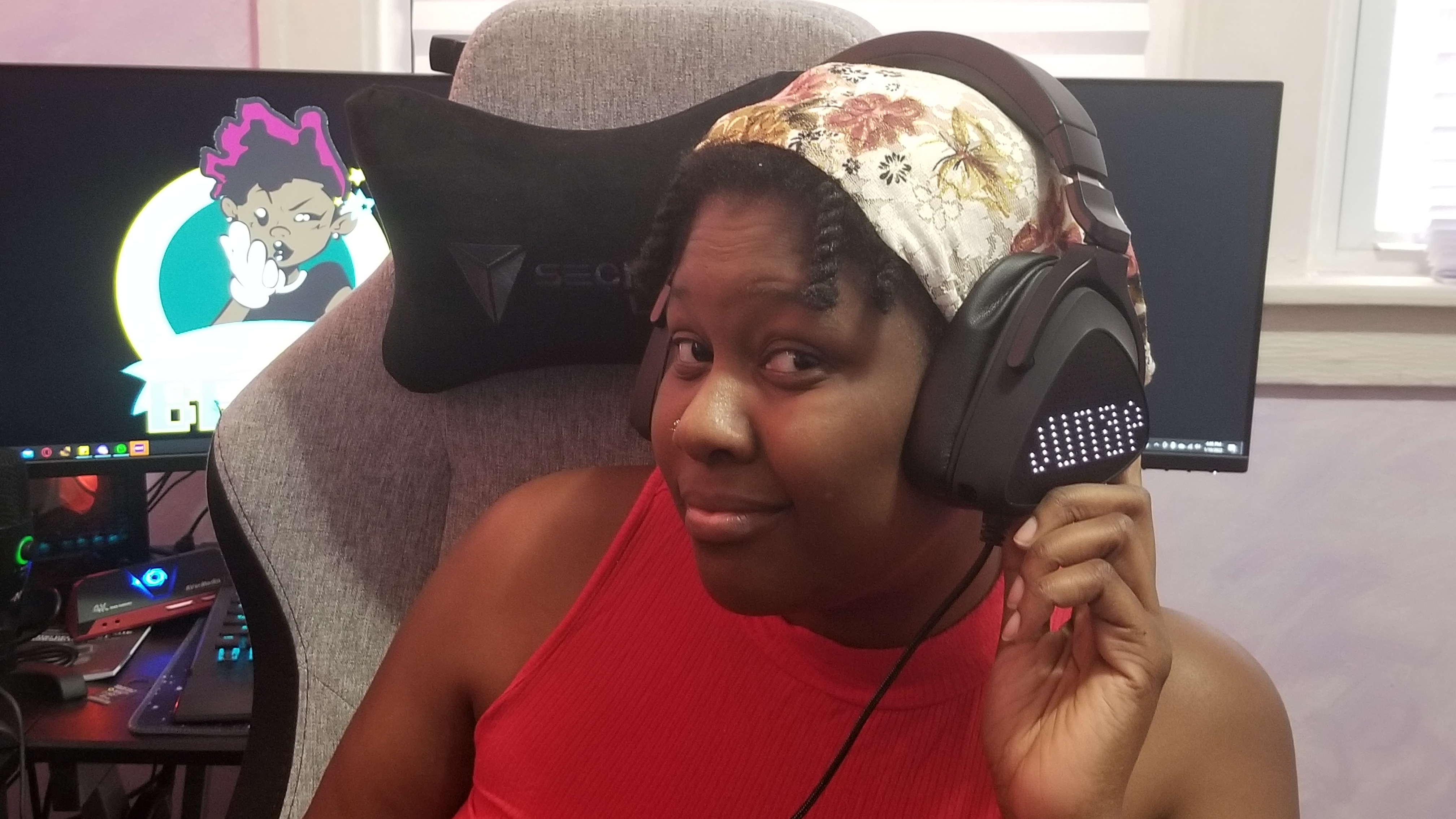Tom's Hardware Verdict
This headset isn’t for newbies; it is for audiophiles. That’s not to say it can’t fulfil the needs of a new content creator.
Pros
- +
+ Great audio quality
- +
+ Customizable LEDs
- +
+ Audio Interface Software
Cons
- -
Expensive
Why you can trust Tom's Hardware
The Asus Rog Delta S Animate has taken a bit of a left turn when it comes to design, both against competing brands but also against that of its predecessor, the Delta S. The biggest draws to this headset are the AniMe Matrix feature (an LED dot matrix display that lives on both earcups) and the AI Noise-Canceling microphone. Crisp sound is a speciality of Asus’ headsets, but another addition that’s refreshing to see on the Animate is the long, 5 foot USB-C (or 3.3 foot USB-A) cord. The Asus Rog Delta S had a shorter cord and wasn’t as comfortable to use. Both cables are braided and can be used with PCs, Macs, PlayStation, Nintendo Switch and mobile devices.
All in all, this feature list means that Animate adds a ton of versatility to the Delta S’ already great audio.
Design
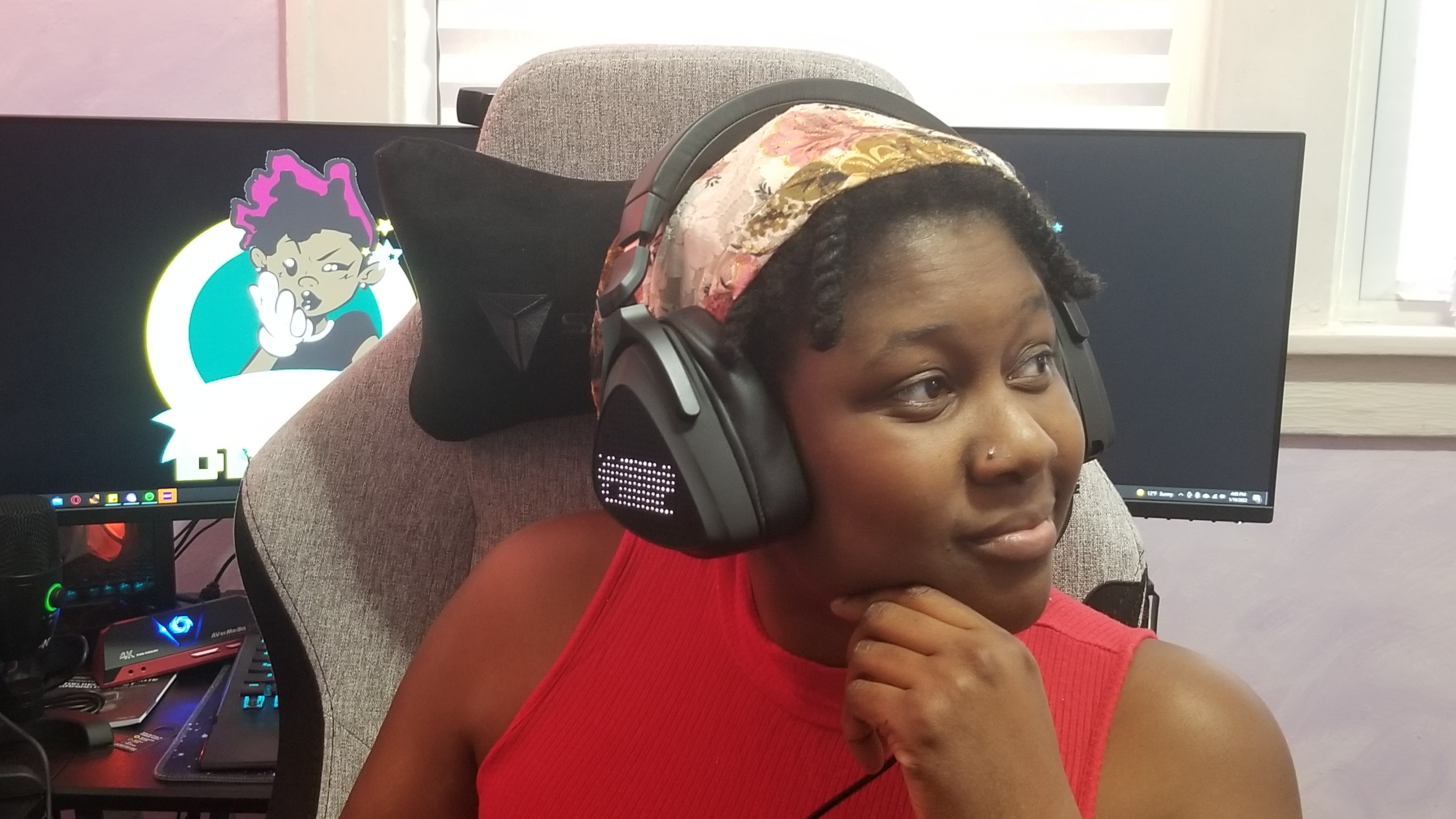
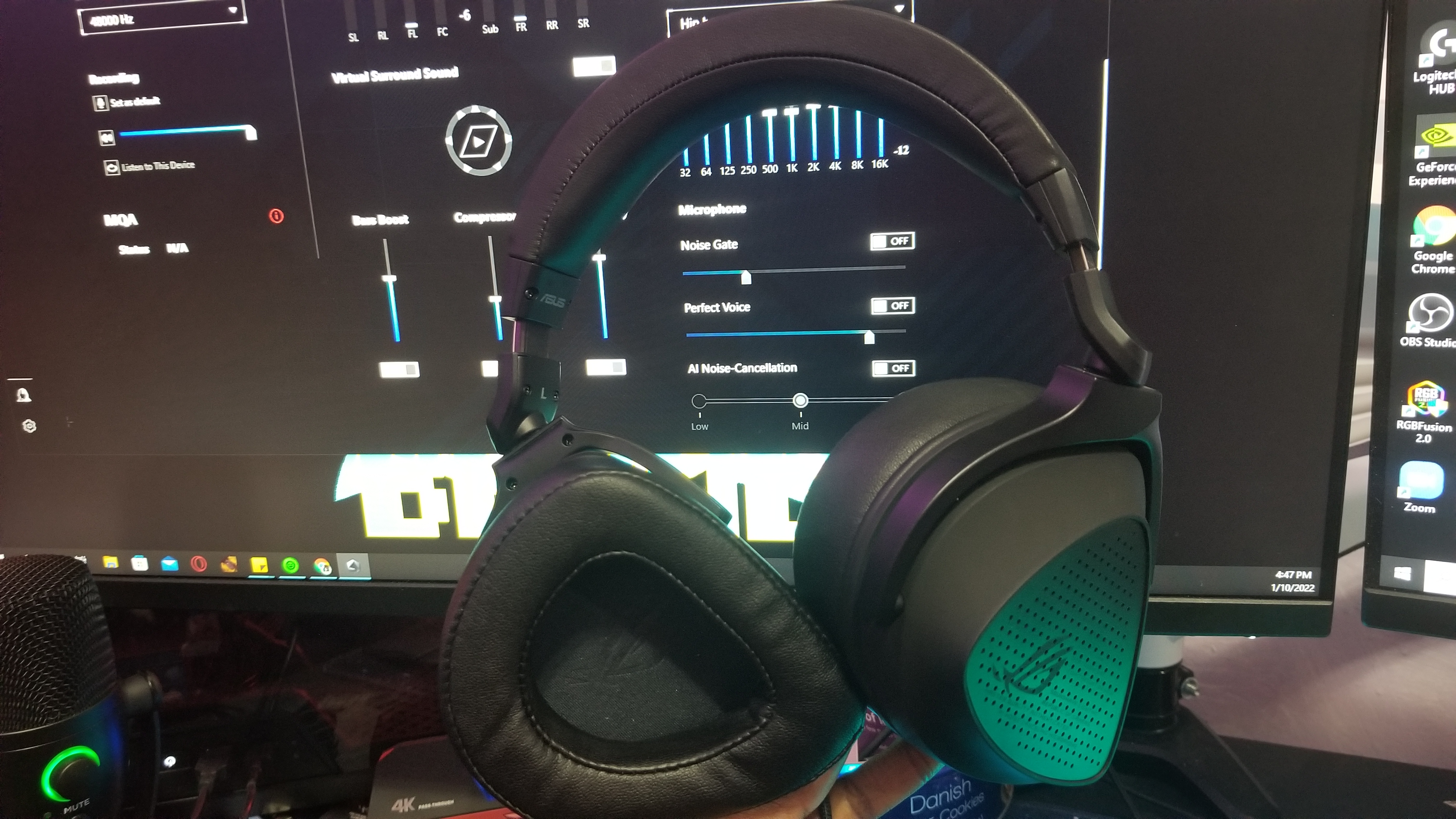
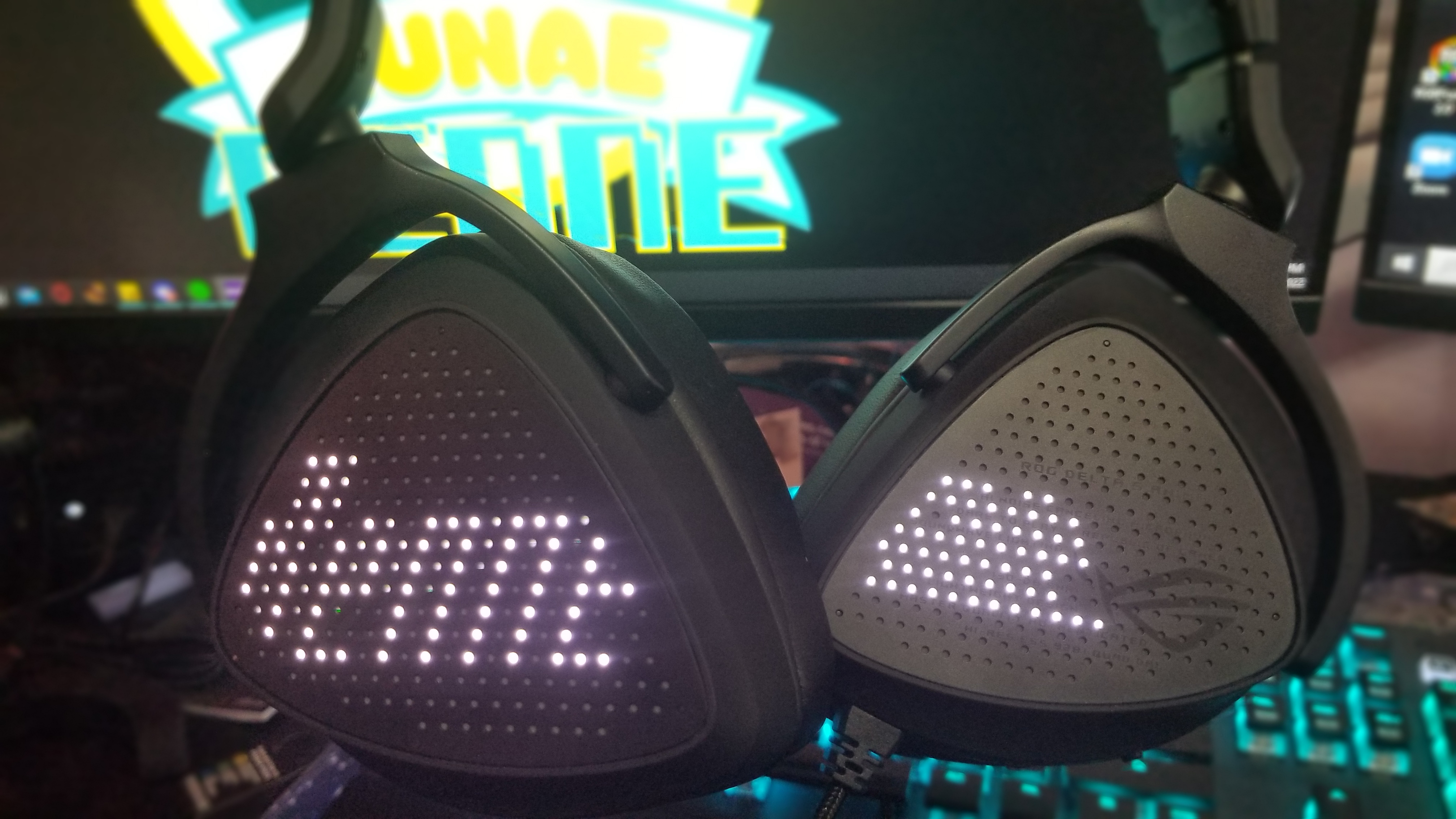
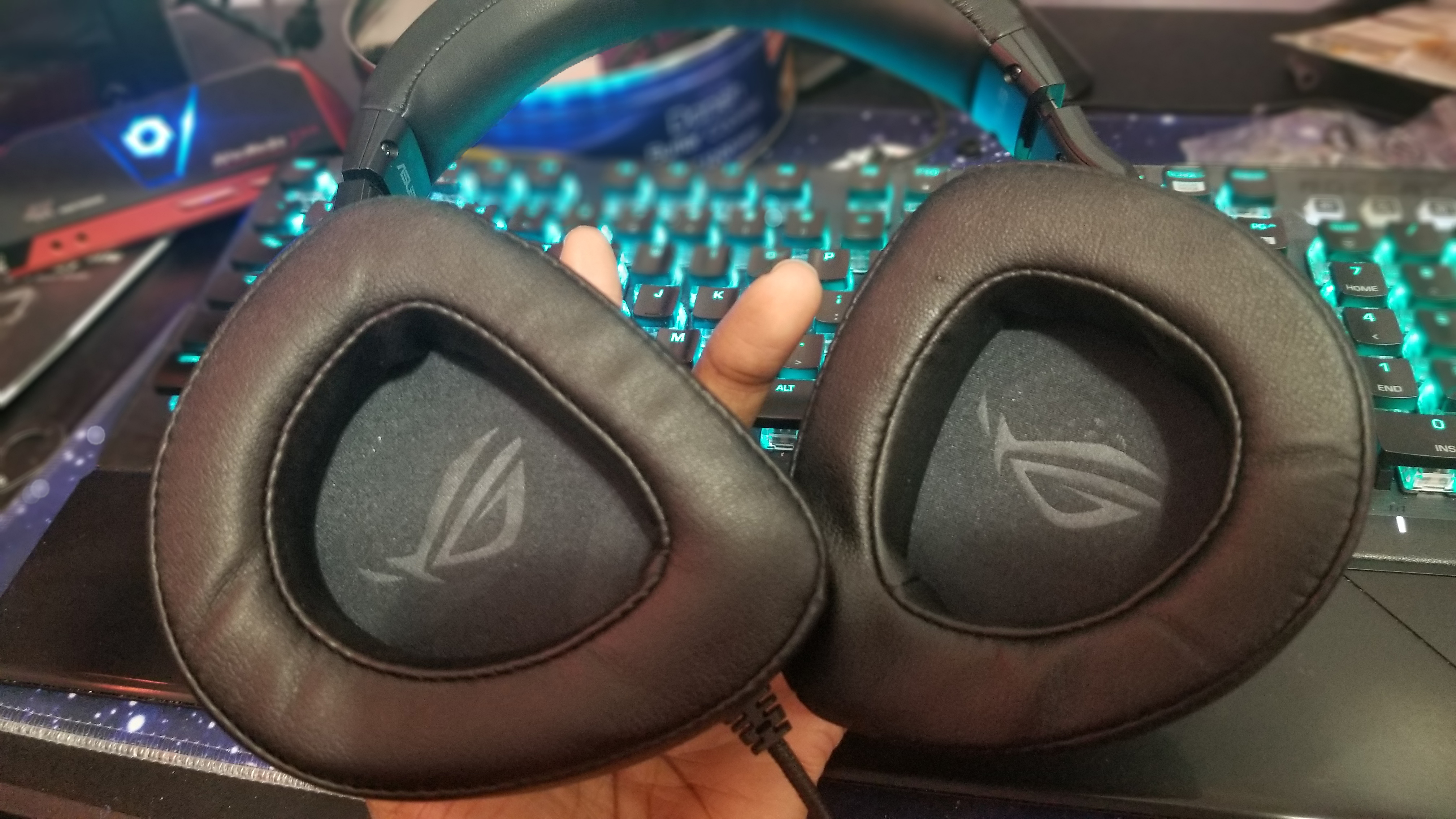
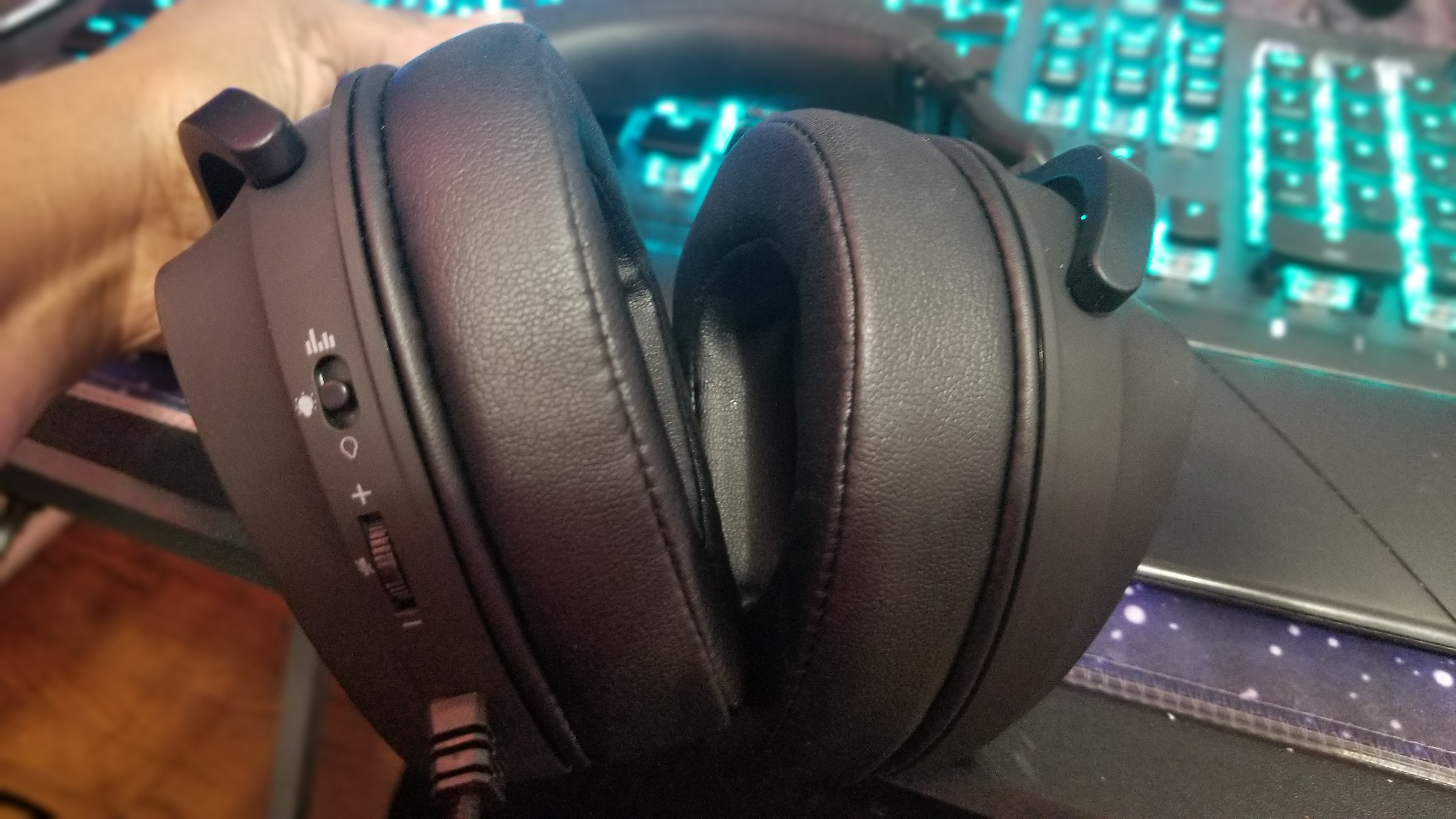
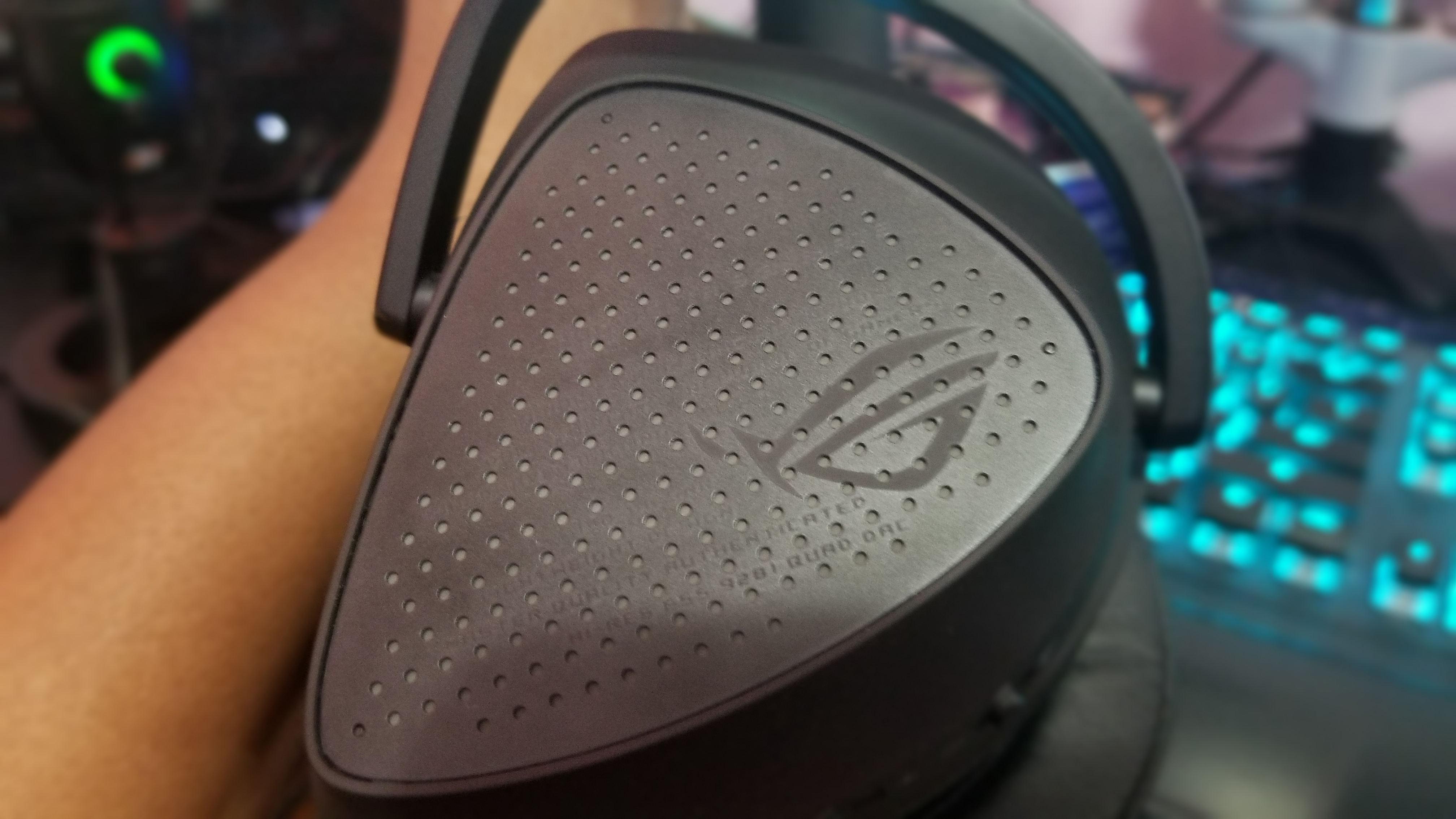
The “D-shaped” earcups on this headset are unique and very much give me triangle vibes, despite their official name. I’m not opposed to this; I like to see headphones opt for unusual earcup shapes to try for more comfort than the norm. I am fully enjoying this scalene triangle — see and you never thought you’d use geometry! Curly-haired nerds, check this part out: The headband that goes over your head is a PU leather wrapped cushion. I have had minimum snagging on my hair while wearing these headphones. I’m also not afraid to get hair products on my headset. It’s really easy to clean. I take a damp paper towel and wipe the headset clean, and that’s it. The Animate is also really lightweight for how big and bulky it is. It weighs under a pound. This makes it easy to adjust the headset while it’s on my head.
While adjusting the Delta S Animate, I noticed the LED earcups are made from molded plastic and the top part is wrapped in PU leather. The latter is the same material that one of the two available earcup cushion sets is made from. The other set is made from fabric, so you can choose between more breathability with fabric or more passive noise cancellation with the PU leather. No matter which earcup cushion you wear, you won’t overheat. They are both designed to stay cool for longer wear times. The removable microphone stem is wrapped in PU leather and the microphone itself is molded bendable plastic. It’s very flexible. It can turn in any direction and it never feels like it’s going to break or snap.
On-earcup controls for the Animate headset include a switch for the AniMe Matrix display and a volume wheel that can also be used to mute the mic by pushing it in. This made it difficult to tell when the mic was muted, though. Although there is software, it doesn’t tell you if the mic is muted. It also doesn't tell you whether or not the mic is connected. A red light on the microphone does let you know when the mic is muted, though that’s difficult to see.
On the AniMe Matrix display, when the mic is muted, there’s a very subtle soundbar LED that turns off to let you know you’re muted, and that’s only available on the Soundwave setting. However, this is hard to see because the panel isn’t really for you, it’s for others (livestream viewers, in my case) – unless, of course, you’re taking off your headset just to see whether or not you’re muted.
Just like the Razer Seiren Emote microphone, the Delta S Animate really focuses a lot of attention on its AniMe Matrix display, which adds to the visual engagement of, say, a streamer’s setup. There are a few different LED settings baked into the dot matrix display’s software and even hardware. The top setting on the AniMe Matrix display switch located on the backside of the left earcup is Soundwave. The Soundwave setting syncs LED bars to your voice and moves them up and down as you talk. The middle setting is for turning the LED panel on. This also allows you to showcase different patterns on the AniMe Matrix display, whether they’re one of the many that come preloaded through the Asus Armoury Crate software or are custom patterns that you’ve created yourself.
Get Tom's Hardware's best news and in-depth reviews, straight to your inbox.
The last setting on the AniMe Matrix display switch toggles the display off. Yes, you can turn off the display whenever you like and turn it back on without having to reprogram the light pattern each time or otherwise fuss around in software. The volume dial is underneath the display switch. It’s not a rotating dial or a rocker button like on the Logitech G435. Instead, it’s a spring-loaded pivoting audio control wheel that you push up or down to control the volume. The wheel can either be held up or down to change the volume to the desired setting, like the volume buttons on a TV remote.
Audio Performance
There are several audio settings included in this headset's software, including Gaming, Music, FPS, Communication, etc. The settings make a difference, so definitely play with them, but the key takeaway here is that this headset sounds great.
Now, if I’m getting ready to game, there are a few different types of gaming sound settings. There is one for FPS, Racing, and RPG. They all sound different. I won’t get the same effect while playing Rogue Company on the basic Gaming sound setting or on the Communication one. Once it’s switched to FPS, though, I might as well be in the game. I’m not a Rogue Company guru, but I noticed I have an easier time telling where footsteps and shots are coming from with the FPS setting on. It is nice to have that type of surround sound for shooters.
The headphones have seven areas the sound can come from. Rear left, side left, front left, front center – front center is when you hear it in both ears. Then there is front right, side right, and rear right. On top of surround sound, this helps each sound optimization be unique. For example, Communication only uses front center. During my Discord calls, I noticed the difference between settings. I liked using the Communication setting. It only used two of the spatial sound sendings and that was enough. I heard voices very clearly. It's almost like the treble is up, so voices sound better.
While listening to “Grindin” by Clipse, that’s when I knew this headset is built different. This $200 headset could give Beats by Dre a run for their money. Grindin is the ultimate bass and subwoofer test. I switched the sound optimization to Music, changed the equalizer to Hip Hop, turned on the Bass Boost, then turned it up. Finally, I enabled Virtual Surround Sound. Doing all of this made me feel like I was in the studio hearing the beat for the first time. The Animate does a great job utilizing spatial audio. It’s very immersive. It wasn’t hard to acquire the desired outcome. Overall, the audio settings have a lot of options and are easy to use.
Software
The Asus Delta S Animate’s software, Armoury Crate, controls the microphone, sound optimization and AniMe Matrix display. Seeing the intricacies of the software, I thought I was going to get overwhelmed quickly with all of the options available. But Armoury Crate gave me a different list of settings that allowed me to change my sound optimization depending on what I was doing, which helped make it more approachable. If I was just talking on Facebook Messenger, there was a Communication setting to help focus on the speaker’s voice. If I was listening to music, I could go to Armoury Crate and change to the Music setting to get the full bass and studio sound of, say, “Crawl” by Childish Gambino.
There are also options to turn Reverb on and off and tweak the Bass Boost, Compressor, Voice Clarity, Noise Gate, Perfect Voice (which boosts voices to provide clearer communication) and AI Noise Cancellation settings. And there is an equalizer. With so many options to adjust, it only makes sense that you can also create and customize different user profiles. There are so many possibilities with an audio interface like Armoury Crate.
Beyond sound settings, AniMe Matrix, a tab in the Armoury Crate software, is where you’ll customize the display. This is a whole other beast within itself. The LEDs are not RBG, but can depict up to 10 seconds of animation. These 10-second clips can then be looped together, and the most clips I’ve combined is 101. I’m not sure what the maximum amount is, but it’s safe to say it’s pretty high. It’s cool to know I could create a whole music video if I wanted. The whole effect is like a Lite Brite toy, but only with white lights. It’s really cool. It doesn’t bother me one bit that it’s not RGB lighting. RGB is on everything. A simple monochromatic effect that uses highlights and contrast is enough for this display and helps it stand out.
I’ve been randomly dropping GIFs in Armoury Crate to see how they look on the LEDs. So far, none of them have really taken, but that doesn’t mean I’m going to stop trying. Each cup packs 247 LED lights. With over 400 LEDs embedded into the headset, the AniMe Matrix display gets a little warm when in use, but not hot. Still, you can feel the temperature difference between the side of the headphones and the AniMe Matrix display where the animations appear.
The earcups can be linked to show the same animation on each side, or there can be a different animation on each earcup. There are about 20 loaded animation presets, and there’s a good deal of variety. Remember those LED belt buckles with scrolling custom text options that you used to wear with your oversized Girbaud (Jabos) jeans and rhinestone Bugs Bunny graphic tee? There is a Text Effect just like that available in AniMe Matrix.
Another nice feature: Just like I can create different profiles and switch between them, I can also assign games on my PC different profiles with the headset. When I have the perfect EQ settings for the speed run game, Aeon Drive, I can attach the profile to it. That way, every time I open the game, the profile will switch and I don’t have to open up Armoury Crate.
Microphone
The Delta S Animate has an impressive unidirectional microphone and settings to back it up. I have the ability to change my microphone from 48kHz to 96kHz under Device Settings in Armoury Crate, which means I can push out higher quality audio at the cost of bigger files if need be. I can control the noise gate and enable AI Noise Cancellation, which is god-tier levels of control. The cool thing about the noise cancellation gauge is that whether it’s on low or high, it feels like it is still doing a solid job of compressing any background noise.
If the cancellation is on, you can’t hear me clapping unless I start talking. If it’s turned off, you can hear me clapping. I enjoy the fullness of my voice when listening back on streams. Even on those late-night streams where my voice got really low and raspy, the mic picked it up. When I stopped talking, it was like I muted the mic. This was with AI Noise Cancellation. I did notice if there is a lot of background noise and the noise cancellation is on, the mic does its best to only get your voice, but you will start to sound a bit choppy and spacey. If you have a quiet room, the noise cancellation removes the ambiance and background noise and brings your voice forward a bit more.
Echo isn’t too much of a concern. When I removed the noise cancellation and turned my headphones all the way to the point where anyone standing by could hear, then my mic started to pick up the sound. But that’s a rare situation.
The Animate mic and the Armoury Crate software both integrate well with OBS. It’s not hard to use it while streaming. The more the EQ settings are tweaked and different profiles created, the easier it is to stream. Anything touched in OBS doesn’t compromise the settings in the software. Having so many customizable options for this microphone frees up time to focus on things like making sure the audience can hear your audio. Using the Animate mic while streaming, I felt a lot less distracted because usually, my audio has to suffer. Or I’m dissatisfied with the way the game sounds to me because I’m so focused on making sure my viewers hear everything perfectly. With this headset and software, it’s less strenuous.
Bottom Line
The Asus ROG Delta S Animate is really lightweight, really comfortable, and really customizable. The two included earcup sets are cozy and don’t smush to my head. Instead, their unique triangle shape fits around my ears. Both sets also stay cool over long sessions. I enjoy the idea of versatility here.
Speaking to versatility, being able to choose whether I use this with my handheld consoles or on my PC is nice. The probability of me using these cans in public is a bit slim, but I could see these as a plane ride accessory sans detachable mic. The mic picks up my voice clearly and I can tweak the EQ settings for any occasion. Even though the headset is made out of plastic, it doesn’t feel cheap and it’s flexible. It’s a $200 headset with $200 worth of functions, software, and comfortability.
I’ve seen a lot of headsets that are good for new streamers or content creators or even someone who has just started their PC journey. This headset is none of those. The Animate is for someone who wants to learn about audio and experience a higher level of audio control. Getting this pair of headphones as a noob isn’t a bad idea. They can be used as a plug-and-play device, but you won’t get to experience the full capabilities that way. Still, you can learn how to use with ease over time. It's a headset that will grow with you.

Junae Benne is a freelance writer for Tom's Hardware US. She reviews gaming peripherals and covers streaming tutorials.
